Centeotl: Lord Of Maize Who Was Revered Before The Olmecs By All Mesoamerica’s Inhabitants
A. Sutherland - AncientPages.com - Domestication of wheat in Mesopotamia and rice in India and China laid the foundation for the Neolithic revolution in Europe and Asia.
Centeotl – a drawing from the Borgia Codex. Image credit: Unknown - Public Domain
The domestication of maize transformed the cultural development of all subsequent American civilizations.
Maize and Pre-Hispanic Mythology
Maize was incorporated in various ways into pre-Hispanic mythology. In ancient times, before the Olmecs, Centeotl was revered by all the inhabitants of Mesoamerica under different names.
For the Quiché Maya who wrote the Popol Vuh, the creator gods experimented with different materials, but they were only able to give rise to true men when they made them from corn seeds.
The Mexica also conceived of creation in successive stages until they reached true humanity and its perfect food: corn. Both cultures manifested in their myths contempt for those people who were not able to plant corn.
Each plant, important to the Mexica, had its deity, and corn, which was the most divine of all, had various representations. Xilonen, conceived as a young deity, was the goddess of the tender cob. Itlamatecuhtli, "the lady of the old skirt," was the goddess of the dry cob.
Birth Of Centeotl – In One Beautiful Legend
Centéotl (centli: corn and téotl: god) was the Lord of Corn in general. An ancient hymn to the god of corn, "Centéotl" has even been preserved by oral tradition in the "Nahuatl" language.
Centeotl was Lord of the Maize, the predominant crop in Mesoamerica. Corn, or maize, was gifted to humans by Quetzalcoatl (Kukulkan), but Centeotl was the maintainer of the crop's growth and fertility. He held the key to successful agriculture, which he taught humans.
Cinteotl, god of corn (Fejérváry-Mayer Codex). Image credit: Unknown author - Public Domain
Versions of mythological stories used to vary much. It is said that Xochiquetzal was married to Centeotl, the god of maize. However, some legends claim that Centeotl was Xochiquetzal’s son instead of a husband.
According to one beautiful legend, the birth of Centeotl is associated with the deity Xochiquetzal, who was remarkably different from the other gods due to her nature. Tezcatlipoca, a central deity in Aztec religion was so captivated by her extraordinary beauty that he couldn't resist abducting her. He then confined her to Tamoanchan, the ninth heaven.
The goddess frequently engaged in the earthly delights, immersing herself in the pleasures of our world. It was during these escapades that she encountered Xochipilli, the deity known for his association with fun and love.
The pair sought refuge from the deities within the confines of the Corn House cave, which is known as the birthplace of Centeotl. Soon after the birth, the gods discovered the hiding place of the lovers, but when they saw the child, they were very surprised.
The boy had the most remarkable appearance.
Storing maize. Illustration from the Florentine Codex, Late 16th century. Public Domain
His hair sprouted cotton, one ear was a fountain of amaranth seeds, while the other produced a stream of fish eggs known as Mexican poppy seeds. Useful plants sprouted from every part of the boy’s body, including potato tubers and a variety of fruits. Even corn rhizomes emerged from his nails.
Upon witnessing this, the gods granted pardon to the escapees because in a brief period, the Earth began to bear fruit from the body of Centeotl, who himself became the God of Corn.
Centeotl’s female counterpart was the maize goddess Chicomecoatl. However, in some myths, Centeotl himself is also shown in female form. In some versions, Centeotl’s mother was Tlazolteotl, a deity of sexuality, steam baths, lust, purification, filth, and a patroness of adulterers. She played a crucial role in the confession of wrongdoing.
By tradition, this corn god was portrayed as a young man with corn cobs in his shoulder bag and in his hands.
Moreover, as the patron deity of farmers and goldsmiths in the city of Xochimilco (in the southern part of Mexico City, he was shown various agricultural tools. Once, Xochimilco - one of the largest agricultural centers of the Aztec state - was famous for its chinampa system.
Aztec farmers widely utilized this brilliant technology of chinampas, and its remnants have survived until today in the city.
Written by - A. Sutherland - AncientPages.com Senior Staff Writer
Copyright © AncientPages.com All rights reserved. This material may not be published, broadcast, rewritten or redistributed in whole or part without the written permission of AncientPages.com
Expand for referencesReferences:
Michael E. Smith, The Aztecs
León-Portilla M. Aztec Thought and Culture: A Study of the Ancient Nahuatl Mind
Ryan, Duncan. The Aztec: The Last Great Civilization of Mesoamerica
More From Ancient Pages
-
 Patara’s 2,400-Year-Old Ancient Kitchen And ‘Women’s Room’ Unearthed
Archaeology | Oct 7, 2020
Patara’s 2,400-Year-Old Ancient Kitchen And ‘Women’s Room’ Unearthed
Archaeology | Oct 7, 2020 -
 Iron Age Site Of Khok Phutsa Excavated In Thailand
Archaeology | Apr 15, 2019
Iron Age Site Of Khok Phutsa Excavated In Thailand
Archaeology | Apr 15, 2019 -
 Giant Ancient Roman Underground Structure Discovered Near Naples, Italy – Aqua Augusta Investigated
Archaeology | Feb 6, 2023
Giant Ancient Roman Underground Structure Discovered Near Naples, Italy – Aqua Augusta Investigated
Archaeology | Feb 6, 2023 -
 Mysterious Bones May Re-Write History Of North America – Humans Were Present On The Continent 10 Times Earlier
Archaeology | May 8, 2017
Mysterious Bones May Re-Write History Of North America – Humans Were Present On The Continent 10 Times Earlier
Archaeology | May 8, 2017 -
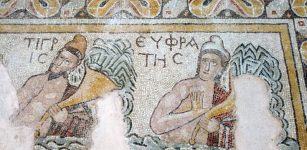 More Beautiful Mosaics In The Ancient City Of Hadrianopolis In Northern Turkey
Archaeology | Sep 28, 2022
More Beautiful Mosaics In The Ancient City Of Hadrianopolis In Northern Turkey
Archaeology | Sep 28, 2022 -
 Giant Pre-Hispanic Jar Used To Make Mexican Traditional Corn Beer
Archaeology | May 6, 2020
Giant Pre-Hispanic Jar Used To Make Mexican Traditional Corn Beer
Archaeology | May 6, 2020 -
 Unexplained Mystery Of The Untraceable Stone-Throwers – Strangeness In North America, Belgium And Indonesia – Part 1
Featured Stories | Nov 11, 2019
Unexplained Mystery Of The Untraceable Stone-Throwers – Strangeness In North America, Belgium And Indonesia – Part 1
Featured Stories | Nov 11, 2019 -
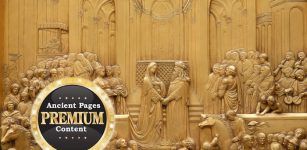 Secret Hidden Freemasonic Messages Concealed In Ancient Egyptian Artifacts And Roman Works – Curious Stellar Symbol – Part 2
Ancient Mysteries | Feb 23, 2022
Secret Hidden Freemasonic Messages Concealed In Ancient Egyptian Artifacts And Roman Works – Curious Stellar Symbol – Part 2
Ancient Mysteries | Feb 23, 2022 -
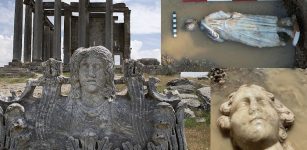 More Greek Gods’ Heads And A Life-Sized Statue Of A Man Unearthed In The Ancient City Of Aizanoi
Archaeology | Dec 28, 2022
More Greek Gods’ Heads And A Life-Sized Statue Of A Man Unearthed In The Ancient City Of Aizanoi
Archaeology | Dec 28, 2022 -
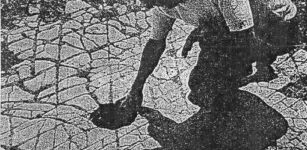 Oklahoma’s Ancient Mosaic Floor With Mysterious ‘Post Holes’ Could Re-Write History Of North America
Civilizations | Aug 10, 2018
Oklahoma’s Ancient Mosaic Floor With Mysterious ‘Post Holes’ Could Re-Write History Of North America
Civilizations | Aug 10, 2018 -
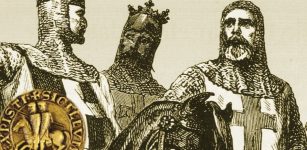 Knights Templar – Among The Most Wealthy And Powerful Of The Western Christian Military Orders
Featured Stories | Jun 11, 2020
Knights Templar – Among The Most Wealthy And Powerful Of The Western Christian Military Orders
Featured Stories | Jun 11, 2020 -
 Manx: Ancient Dead Gaelic Language That Refused To Die And Has Been Revived Again
Ancient History Facts | Oct 7, 2016
Manx: Ancient Dead Gaelic Language That Refused To Die And Has Been Revived Again
Ancient History Facts | Oct 7, 2016 -
 Why Did Ancient Romans Cut Off Their Thumbs?
Ancient History Facts | Mar 2, 2020
Why Did Ancient Romans Cut Off Their Thumbs?
Ancient History Facts | Mar 2, 2020 -
 Underwater Archaeologists Explore The Secrets Of Loch Achtily Crannog – Will They Find A Rare Medieval Settlement?
Archaeology | Mar 26, 2025
Underwater Archaeologists Explore The Secrets Of Loch Achtily Crannog – Will They Find A Rare Medieval Settlement?
Archaeology | Mar 26, 2025 -
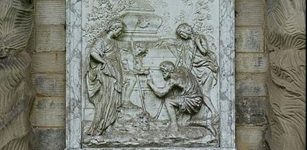 Shepherd’s Monument Mystery: Yet Another Undeciphered Inscription
Featured Stories | Jun 26, 2023
Shepherd’s Monument Mystery: Yet Another Undeciphered Inscription
Featured Stories | Jun 26, 2023 -
 Mysterious Wise Pre-Flood Beings Who Gave Humans A Precious Gift – Did We Reject It?
Featured Stories | Mar 9, 2025
Mysterious Wise Pre-Flood Beings Who Gave Humans A Precious Gift – Did We Reject It?
Featured Stories | Mar 9, 2025 -
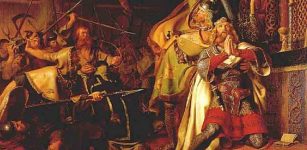 Thousand-Year-Old Sarcophagus Discovered In Odense
News | Sep 28, 2015
Thousand-Year-Old Sarcophagus Discovered In Odense
News | Sep 28, 2015 -
 On This Day In History: Scottish Hero William Wallace Who Met Horrible Death – Is Still Remembered – August 23, 1305
News | Aug 23, 2016
On This Day In History: Scottish Hero William Wallace Who Met Horrible Death – Is Still Remembered – August 23, 1305
News | Aug 23, 2016 -
 Unique Find: Sacred Gate Found At The Minoan Palace Of Archanes In Crete
Archaeology | Nov 1, 2024
Unique Find: Sacred Gate Found At The Minoan Palace Of Archanes In Crete
Archaeology | Nov 1, 2024 -
 Sverd I Fjell – Swords In Rock: Battle Of Hafrsfjord Won By Harald Fairhair – First King Of Norway
Featured Stories | Mar 9, 2016
Sverd I Fjell – Swords In Rock: Battle Of Hafrsfjord Won By Harald Fairhair – First King Of Norway
Featured Stories | Mar 9, 2016



